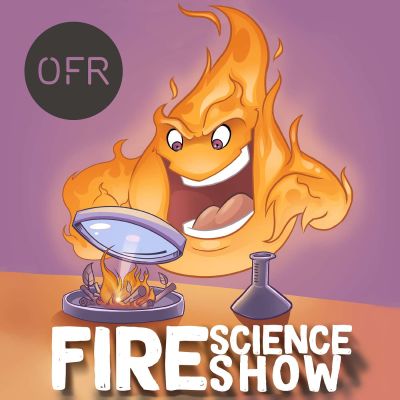Fire Science Show is connecting fire researchers and practitioners with a society of fire engineers, firefighters, architects, designers and all others, who are genuinely interested in creating a fire-safe future. Through interviews with a diverse group of experts, we present the history of our field as well as the most novel advancements. We hope the Fire Science Show becomes your weekly source of fire science knowledge and entertainment. Produced in partnership with the Diamond Sponsor of the show - OFR Consultants
https://www.firescienceshow.com/
Gesamtlänge aller Episoden: 5 days 20 hours 15 minutes
149 - CROSS UK with Neil Gibbins and Peter Wilkinson
CROSS UK is Collaborative Reporting for Safer Structures in UK. CROSS is a confidential reporting system which allows professionals working in the built environment to report on fire and structural safety issues. These are then published anonymously to share lessons learned, create positive change, and improve safety. Find out more about the safety information we provide below...
148 - Building Integrated Photovoltaics with Reidar Stølen
In this episode of the Fire Science Show we go in depth on the Building Integrated Photo-Voltaic systems (BIPV). It is a topic relevant to many fire engineers, and one on which it is very difficult to find a lot of information about. For this purpose I’ve invited Reidar Stølen from RISE and a PhD candidate at Norwegian University of Science and Technology – NTNU...
147 - Wildfire Industrial Interface and risk assessment with Eulàlia Planas
In this episode, we explore wildfire's impact on industrial fire safety with Professor Eulàlia Planas from Universitat Politécnica de Catalunya. Eulalia defines the term Wildland Industrial Interface (WII), a realm where the forces of nature clash with safety and process engineering...
146 - Take care of your mental health with Ann Jeffers
Depression and anxiety are on the rise in both academia and engineering consultancies. Everyone is constantly stressed and pushed to their limits. The system is built this way... And imagine that on top of the inadequate mental health related to the stressful environment, you also struggle with a mental illness. A health condition you did not choose, you may or may not be aware of, and may or may not be treating.....
145 - Fire Safety Engineering in South Africa and Beyond with Richard Walls
In this episode, we discuss the stark realities of fire safety engineering in South Africa (and beyond) as we sit down with Professor Richard Walls from Stellenbosch University. Our journey through the recent history of devastating fires, from truck blasts to the fire that took down the SA Parliament building, lays bare the critical gaps in resources, awareness and education that have catastrophic consequences...
144 - Design fire generator with Greg Baker
Imagine if we had a tool that we could use to design a design fire. Instead of simply assuming fire growth characteristics by slapping the alpha-t2 function, use a tool that could tell us which items in a compartment burn and what the characteristics of that fire are. I would say this dream is shared among many fire safety engineers - I think we can all agree that we could use such a tool...
143 - Fire Fundamentals pt 7 - CFD simulations of fires
In today's fire fundamentals episode, I have chosen a difficult job: explaining how CFD modelling works without the ability to put a single equation out there! It's much tougher than I thought! I hope I've done a decent job, though.
I am trying to fill out this niche of talking about CFD at an approachable level. I've noticed there is a ton of 'introductory' level resources about modeling...
142 - Uncertainty in fire measurements with David Morrisset
If the word 'uncertainty' sounds extremely boring to you, this episode will prove you wrong. I have invited David Morrisset from the University of Edinburgh to discuss his research on the subject. Whereas in fact David is establishing standard deviations, means and other statistical means of quantifying uncertainty in core fire measurements, the really impactful and important part of his research is on explaining WHY those uncertainties are there...
141 - Smouldering in Mass Timber with Harry Mitchell
This week, I am meeting up with Imperial Hazelab's Harry Mitchell, who is finalizing his PhD thesis on mass timber fires and, quite uniquely - including the smouldering phenomena in those fires.
As a part of Code Red experiments run by Arup, Imperial College London and Cerib (which you can learn more about from episode 111 with Panos Kotsovinos) Harry has performed observations of formation, growth and decay of smouldering "hot spots" for up to 2 days after the fire...
140 - Development and implementation of the SBI test with Rudolf van Mierlo
Tests in the world of reaction to fire are supposed to be representations of real fire scenarios, allowing us to grasp the characteristics of building products against them. While for the worst scenario (flashover fire) or the smallest ignition source (small flame), the definition is pretty straightforward. However, creating the intermediate method that the entire Europe would agree on was a bumpy ride...
